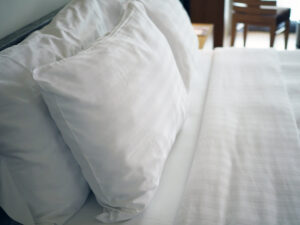The Truth About Allergy Proof Bedding – Does it Really Help Reduce Allergies?

It’s normal for someone with a dust or dander allergy to have severe symptoms at night. Why? Dust mites live in dust, feed on skin cells, and induce allergic reactions in people. Because most people spend so much time in their beds each day, it’s not uncommon for a bed to accumulate a big number of skin cells, making it a prime target for dust mites. Allergy-proof mattress is one of the offered answers to this problem, but does it truly work?
Dust mite allergies: the reality
Dust mite allergies are caused by proteins released by dust mites as they decompose. Sneezing, itchy skin, runny nose, watery eyes, and coughing are all allergic symptoms that can be caused by these proteins. Dust mites can trigger asthma episodes, much as other allergies.
Regularly washing linens can help
A person suffering from dust mite allergies should begin by cleaning their linens on a regular basis. When the sheets are clean, the skin cells that attract dust mites are removed, and any dust mites that are present are destroyed during the washing process. This may be sufficient for someone who has a slight allergy to dust mites. Those who have more severe responses to dust mites, on the other hand, may select bedding that is particularly intended to avoid dust mite reactions.
What exactly is allergy-free bedding?
The construction of this bedding is straightforward: It is quite densely woven, which should help avoid allergies in two ways. One, it helps to keep allergens contained within the bed (such as those found in the mattress and pillow) from escaping and causing a response. Two, it prevents dead skin cells from getting into the bedding, depriving dust mites of cells to live on.
Is this style of mattress truly beneficial?
It is determined by the brand. There are a handful on the market, and some of them claim to have a special fabric that prevents allergies. This isn’t correct. The only thing that matters is that the material be woven in such a way that the pores are six microns or smaller in diameter. These allergy coverings should be used on goods like a mattress, pillow, duvet, or box spring that aren’t cleaned on a regular basis.
This sort of bedding can be beneficial when utilized appropriately. It’s crucial to remember, however, that this is only true if the allergen is dust mites. This sort of bedding will not effect other allergies, such as pollen allergies. Contact Allergy, Asthma, and Immunology Medical Group at 805-658-9500 to understand how to alleviate such symptoms.



